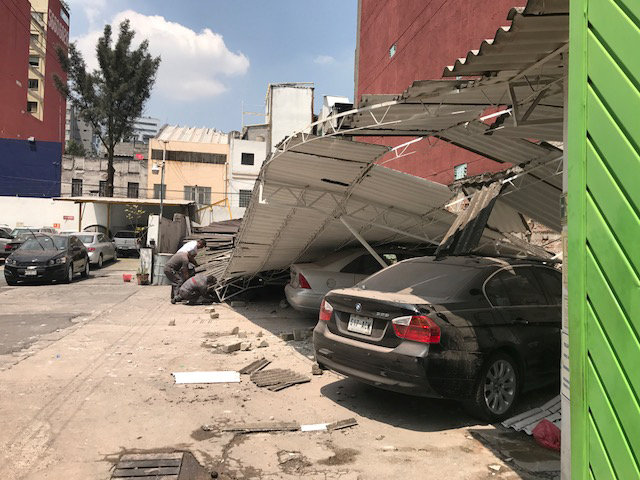
By Anthony Esposito
MEXICO CITY (Reuters) – A major earthquake of magnitude 7.1 struck central Mexico on Tuesday, toppling dozens of buildings in the heavily populated capital and killing at least 49 people nearby.
President Enrique Pena said 27 buildings had collapsed in Mexico City, one of the world’s biggest cities. The first reports of fatalities were from surrounding areas.
In the state of Morelos, just south of Mexico City, 42 people died, the state’s governor said. Authorities reported other deaths in neighboring Puebla and the State of Mexico.
“People are really scared right now,” said dentist Claudia Meneses who was in her clinic in Mexico City’s Lindavista neighborhood when the earthquake struck mid-afternoon. “We’re going to go to a building that fell to see if we can help.”
Earthquakes of magnitude 7 or above are regarded as major and are capable of causing widespread heavy damage.
Television images showed a multi-story building in the capital with a middle floor collapsed as sirens blared and first responders rushed to the scene. Other video showed the side of a government building shearing off and falling into the street as bystanders screamed.
Rescue workers pulled at least one survivor from a collapsed building in the Condesa neighborhood near the center of Mexico City.
U.S. President Donald Trump said on Twitter: “God bless the people of Mexico City. We are with you and will be there for you.” The city and its surrounding area are home to about 20 million people.

Damages are seen after an earthquake hit in Mexico City, Mexico September 19, 2017. REUTERS/Carlos Jasso
In Cuernavaca, a city south of Mexico City, there were unconfirmed reports on local radio of people trapped beneath collapsed buildings.
Mexican TV and social media showed cars crushed by debris. Many people fled into the streets, and electricity and phone lines were down in parts of the capital.
“We got out really fast, leaving everything as it was and just left,” said Rosaura Suarez, as she stood with a crowd on the street.
The quake hit only hours after many people participated in earthquake drills around the nation on the anniversary of a devastating quake that killed thousands in Mexico City in 1985.
Many people were also still shaken from another quake on Sept. 7 in southern Mexico that killed at least 98 people.
The epicenter of Tuesday’s quake was located in the central state of Puebla, the U.S. Geological Survey said.
(Reporting by Mexico City newsroom; Editing by Cynthia Osterman and Alistair Bell)






 The Popocatepetl volcano near Mexico City shook with increasingly powerful explosions that have forced the Mexican government to evacuate some residents and launch emergency measures.
The Popocatepetl volcano near Mexico City shook with increasingly powerful explosions that have forced the Mexican government to evacuate some residents and launch emergency measures.